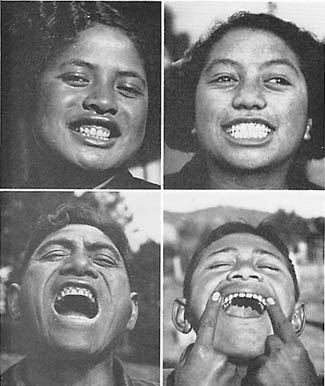There are a few different ways to go about finding happiness in life. The most common one looks something like this…
Get a job–> make money–>acquire things–>keep up with the Jones’s–>get a spouse–>fall in love–>try and maintain connection despite obvious pitfalls of monogamy–>raise children–>hope children are successful
Along the way you may or may not find happiness. Those little moments when your kid takes his first step or you finally have time off your hectic work schedule to take a vacation. Those moments are great, that is what most people live for. But in between there is generally a lot of stress, too much work, fights with your spouse, your kids get ill. Things just don’t go according to plan. I don’t have to tell you all about this, this is normal life for the vast majority of people on planet earth.
I call this the Outward Path, because it’s the path of trying to make things in your environment just right so that you can live a good life.
There is however a different way to approach life.
The Inner Path.
The inner path is in many ways the opposite of the outward path. The outward path finds happiness by trying to accomplish some goal, or do some activity that causes a positive emotional change within your body. However, if things don’t work out the way you want them to, sadness and stress appear. The inner path involves working with your own mind directly so that you can experience well-being regardless of the circumstances of your outward life.
The most popular and perhaps most effective style of the inner path is that laid out by Siddhartha Guatama (more commonly known as the Buddha) in India 2500 years ago. In the hundreds of years since the Buddha existed lots of myths and legends grew up around his life and his teachings and we don’t know exactly what is true. I personally don’t believe that he was in any way other than a normal human being who happened to gain through years of dedicated practice an immense understanding about the workings of his own mind.
In other words, he may have been the world’s greatest psychologist.
What we do know is that you can strip away all the miracles, karma, past lives, in a sense..all the religion that surrounds buddhism and break it down into a very secular philosophy and psychology on how to become happy.
Here is the path to enlightenment.
1.Morality
In buddhism morality is really about living a life that is going to allow you to have as little stress as possible so that you can get the most benefit out of meditation. Getting in fights with others, hurting people, stealing, killing, too much gossiping, or having a job that takes advantage of others all lead to a stressful mind from which it would be hard to meditate. Having greedy worldly ambitions for power, money and excess is also not going to lead you to a place of peace. But neither will a life of asceticism and poverty as the Buddha learned the hard way. That is why the Buddhist path is called “The Middle Way.” Sort out the conditions of your life in such a way that you are not going to be worried about the basics of food, shelter,health and good relations with others than get to practicing.
2.Concentration
Now down to the very enjoyable business of meditating. Here is where the rubber meets the road. The end goal of meditation is to see reality clearly, without any illusions, but to do this one needs have very strong powers of concentration to focus on whatever aspect of reality you are going to be looking at later on. Therefore it is mandatory to begin your meditation practice by training in concentration. Which I’ve already outlined how to do here..
Eventually when your concentration powers get super strong two things will happen. First you will be able to access incredibly joyous and sublime states of altered consciousness called jhanas. These states of deep absorption are better than sex. And if you are really good at meditating than you can access these states of bliss whenever you want.
Second you now have requisite concentration powers for the third training.
3. Wisdom
Also known as insight meditation these forms of meditation allow you to focus on the reality that is going on within your own body and mind. You will look at the sensations that make up your feelings, thoughts, and even the nature of your sense of self and see more clearly what they really are and how they work.
There are three realizations that you will come to learn about the nature of reality.
A)Impermanence- Everything in life, and especially when we are talking about the sensations that make up your world of experience is transient. Sensations come and go, thoughts come and go, mental images come and go. This is important to know because it chips away at the notion of a stable self or mind, that we all believe we have.
B) Suffering- When you really examine your mind, you will notice that desire leads to suffering. I’m not talking about gross levels of suffering such as depression and anxiety attacks, or intense desires such as to become a billionaire or take over the world, but the smallest little minute aspects of our moment-to-moment experience. The desire to overcome boredom, restlessness (think waiting for a commercial to end), the desire to get a word in during a conversation or desire to have this person think you have this quality or that quality. The desire for traffic to move faster. The desire to be pain free or the desire to win this or that or finish whatever it is you are doing so you can do something more enjoyable. When you get really good at meditating you notice there are even more subtle levels of desire than this. What you find is that the current way you view the world as a self and everything outside of you as other leads to inherent unsatisfactoriness the keeps you from being perfectly calm and restful.
You may think, oh but I’m actually happy, I don’t suffer! Well that’s great, but remember I’m talking about very subtle levels of dissatisfaction that you may not be aware of if you aren’t really paying attention to what is going on in your mind. In other words, you think you are happy but you really don’t know just how calm you could be..
C) No-Self. Probably the most confusing aspect of buddhism, and one that I still haven’t completely wrapped my head around. But the illusion here is that there is a permanent, stable, “I” that exists instead of a series of transient phenomenon that gets weaved into a story of “Me,Mine,I.” To elaborate on this more would be take this post way too long and since my understanding of it is purely theoretical and not experienced (I am not enlightened..yet!) I will hold off for now..
What I can tell you is that this belief in a self..call it ..EGO..is the basis for all the desires we have that lead to the subtle levels of unsatisfactoriness that inhabit our moment-to-moment experience of existence. “I” want this person to think I’m funny, “I” want xyz, I want to be successful, I don’t want this person to know this about me” etc. Once the ego is seen for what is it, an illusion, then it begins to drop away and so do the desires that cause dissatisfaction.
What’s left? What happens when you have have done all of this?
After all this meditating your conscious experience is completely transformed and the way you perceive reality has changed so that your natural state is that of inner peace. A peace that is just way beyond anything you could experience in common every day consciousness. This peace is also relatively independent of external conditions. It is just there, now. You sit at ease with the world, without the need to effect or manipulate it in any way so that you could be less stressed in that moment. My friend Noah Elkrief, who has attained enlightenment said that even when his Dad was in a life or death surgery at the hospital he sat in the waiting room completely free of worry and at peace. If you want you can access those blissful states called jhana I mentioned earlier, states that are better than sex or any pleasure you come across along the Outer Path. You can do these whenever you want and they have no side effects to your health.
Author of “Mastering the Core Teachings of the Buddha”, (the legendary underground book that is hands down the best explanation of enlightenment by someone who reached it as normal every day person and not a monk) Daniel Ingram wrote in response to the question “What is the point of all this?”
Very briefly:
The naturally clear mind is much better than the unclear mind, the semi-clear mind and the intermittently clear mind.
The awake mind is much better than the less awake mind.
The timeless mind is much better than the mind caught in the illusion of time.
The mind without any artificial boundary is much better than the artificially bound mind.
The mind that knows there is no mind is much better than the mind that believes there is one.
The directly perceiving mind is much better than the mind that filters things through and the sense that there is attention.
The mind that knows there is no perceiver is much better than the mind that believes it is perceiving.
The mind that is stainless is much better than the mind that is stained.
The mind that is the same as bare phenomena much better than the mind that is the same as bare phenomena but doesn’t know it.
The mind that is without extraneous noise is better than the noisy mind.
The mind for which all the world arises effortlessly, naturally, lawfully, causally, this is much better than the mind that pretends it is creating effort, creating thought, creating anything.
That fluxing, shimmering field of bare experience that occurs on its own, knows itself directly where it is, as it is, is totally ephemeral, totally fresh, totally natural: this is so much better than the world perceived some other way.
In that mode: there is nothing to want anything.
In that mode: there is nothing to know anything.
In that mode: there is nothing to do anything.
And yet, wanting occurs, as there is an animal that has needs from an ordinary point of view, which is still a valid point of view, but this wanting is just a natural part of the field.
There are preferences, but they are just causality functioning, shimmering, fluxing, doing what it does and always has done.
There is knowledge, but nothing that knows it beyond the shimmering, dancing, flickering little tingling bursts that make up knowledge.
This is vastly, immeasurably better than the other ways of perceiving reality. To prefer something less is madness. 😉








